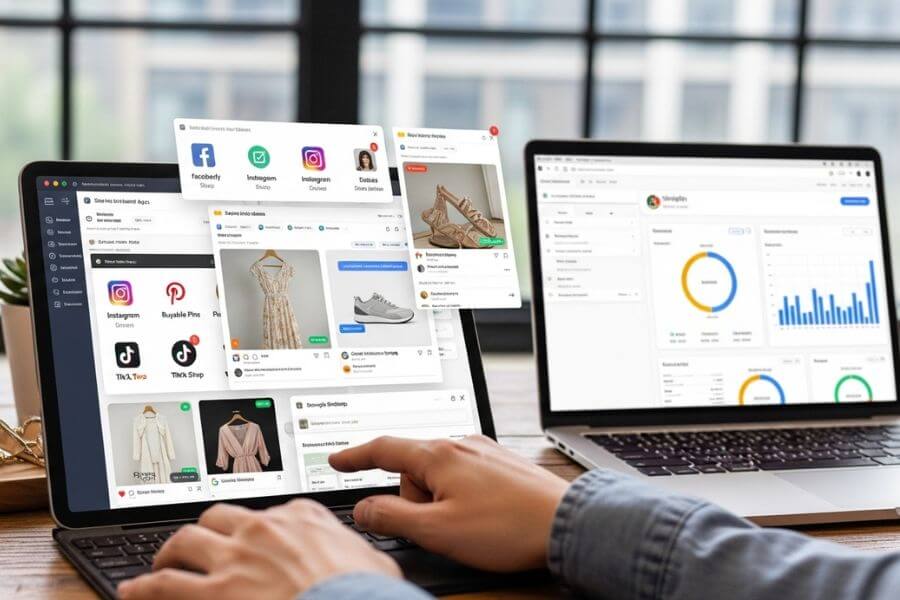The retail landscape has transformed rapidly, and in 2025, omnichannel fulfillment is no longer a luxury; it’s a necessity. Customers expect fast, flexible, and seamless shopping experiences across multiple platforms, from brick-and-mortar stores to online marketplaces and mobile apps. For retailers, delivering this experience requires a fulfillment strategy that can match the pace.
However, as the demand for convenience and speed increases, so do the complexities of managing fulfillment across various sales channels. In this article, we’ll explore the 10 biggest fulfillment challenges omnichannel retailers face in 2025, why they matter, and how you can navigate them.
1. Rising customer expectations for speed and flexibility
Today’s customers expect same-day or next-day delivery as a standard, not a bonus. With companies like Amazon setting the bar, other retailers are under immense pressure to match or beat these expectations. But omnichannel fulfillment adds complexity, especially when managing inventory across in-store pickups, local delivery, and traditional shipping.
In 2025, shoppers want the freedom to choose how and when they receive their orders. Whether it’s click-and-collect, curbside pickup, or locker delivery, retailers must optimize fulfillment processes to accommodate varying delivery methods, all without delays.
Solution tip:
Invest in real-time inventory visibility and integrate AI-powered logistics tools to dynamically assign the fastest, most efficient fulfillment route.
2. Inventory visibility across all channels
Maintaining accurate inventory visibility across multiple sales channels is still one of the top challenges for omnichannel retailers. A lack of synchronization between online and offline systems often leads to overselling, stockouts, or missed sales opportunities.
Customers expect availability updates in real time. A single inaccurate product listing can result in customer dissatisfaction, refund requests, and negative reviews, hurting both brand reputation and bottom line.
Solution tip:
Implement a centralized Order Management System (OMS) that syncs inventory in real time across all platforms, including ecommerce websites, marketplaces like Amazon and Walmart, mobile apps, and physical stores.
3. Handling returns efficiently (reverse logistics)
Returns are inevitable in ecommerce, and omnichannel strategies amplify the challenge. In 2025, customers may order online and return in-store, or buy via a social media platform and initiate a return through a fulfillment center. This growing web of reverse logistics can strain operational workflows.
Complicating matters further, shoppers expect hassle-free and cost-free return policies. Retailers that fail to meet this expectation risk losing repeat customers.
Solution tip:
Build a returns-ready fulfillment strategy with clearly defined policies, designated reverse logistics hubs, and third-party logistics (3PL) support that specializes in omnichannel returns.
4. Managing multiple fulfillment partners
To deliver efficiently across regions, many retailers work with multiple 3PLs or warehouse providers. However, this can lead to fragmented operations if not managed correctly. Differences in software systems, shipping timelines, and service quality can introduce inconsistency across customer experiences.
Retailers often struggle to keep control over the brand experience when working with different partners.
Solution tip:
Use a multi-warehouse management platform with integrated dashboards that allow centralized control over all fulfillment partners, performance tracking, and service-level agreements (SLAs).
5. Data integration and system interoperability
Omnichannel fulfillment requires seamless data flow between ERPs, CRMs, POS systems, ecommerce platforms, and warehouse software. Unfortunately, in 2025, many retailers still deal with legacy systems that don’t play well together.
Poor integration leads to delayed orders, fulfillment errors, and inaccurate reporting, all of which negatively affect the customer journey and internal decision-making.
Solution tip:
Adopt middleware solutions or integration platforms-as-a-service (iPaaS) that bridge system gaps, ensuring all parts of the retail tech stack communicate effectively in real time.
6. Last-mile delivery complexities
The last mile is often the most expensive and unpredictable part of fulfillment. Omnichannel retailers must navigate urban congestion, fuel costs, traffic regulations, and delivery failures, all while trying to deliver faster and cheaper than ever.
With growing demand for same-day delivery and real-time tracking, the pressure on last-mile logistics is massive in 2025.
Solution tip:
Use AI and route optimization software to reduce delivery times and costs. Partner with local courier networks or micro-fulfillment centers to stay closer to the customer.
7. Labor shortages in warehousing and fulfillment
Despite advancements in automation, the demand for human labor in fulfillment still remains high, especially during peak seasons. But in 2025, labor shortages continue to impact warehouse operations, leading to delays, increased costs, and reduced service levels.
Hiring, training, and retaining skilled warehouse staff has become increasingly difficult due to high turnover and competition for talent.
Solution tip:
Invest in warehouse automation, robotics, and AI-driven picking systems to reduce reliance on manual labor. For human labor, enhance working conditions, offer flexible schedules, and invest in training programs to boost retention.
8. Balancing cost efficiency with customer satisfaction
Providing omnichannel fulfillment is expensive. From running multiple distribution centers to offering flexible delivery options and free returns, the operational costs can skyrocket. At the same time, customers are less willing to pay for shipping.
Retailers must strike a delicate balance between cost and convenience to stay profitable while meeting expectations.
Solution tip:
Leverage demand forecasting, real-time analytics, and smart automation to streamline operations and cut costs. Offer tiered shipping options so customers can choose between speed and cost.
9. Compliance with local and global regulations
In 2025, cross-border fulfillment is more common than ever. But with it comes the need to comply with customs, duties, taxes, data privacy laws, and regional packaging standards. Non-compliance can result in fines, delivery delays, and damaged brand trust.
This challenge is especially critical for retailers operating across North America, Europe, and the Asia-Pacific regions, where regulations differ widely.
Solution tip:
Work with customs brokers, 3PLs, or compliance platforms that stay up-to-date with regulatory changes. Automate international shipping documentation to reduce risk and error.
10. Sustainability and eco-friendly fulfillment demands
Consumers in 2025 care deeply about sustainability. They’re not only evaluating your products, but also your packaging, shipping methods, and carbon footprint. Omnichannel retailers must now align their fulfillment practices with environmental values, or risk losing eco-conscious customers.
Plastic-heavy packaging, inefficient shipping routes, and wasteful returns are all under the spotlight.
Solution tip:
Switch to eco-friendly packaging, carbon-neutral shipping options, and sustainable warehouse operations. Communicate your sustainability efforts clearly on all channels to build customer trust.
Conclusion
As omnichannel retail becomes the norm in 2025, the fulfillment landscape is growing increasingly complex. From managing real-time inventory across platforms to meeting customer expectations for speed and sustainability, the challenges are vast but not insurmountable.
Retailers that prioritize automation, data integration, smart logistics, and customer-first strategies will be better positioned to win in the competitive ecommerce and retail space.
Whether you’re a small business expanding across channels or a large retailer modernizing operations, tackling these fulfillment challenges head-on is key to delivering on your brand promise and growing sustainably.





